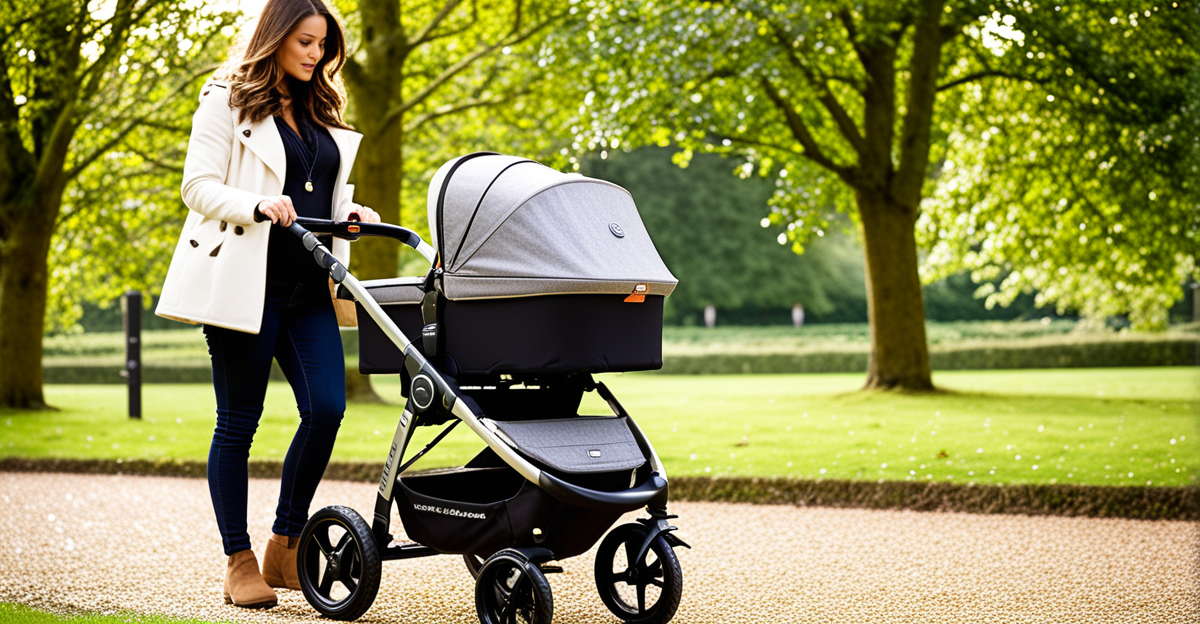Navigating Stroller Choices for UK Parents: Essential Considerations
When choosing a baby stroller in the UK, understanding the different types of baby strollers is crucial. Common options include standard strollers, lightweight/umbrella strollers, travel systems, and jogging strollers. Each type suits different ages and lifestyles. For example, travel systems combine a stroller with a car seat, perfect for on-the-go parents, while jogging strollers offer stability for active families.
A comprehensive stroller buying guide UK highlights key selection factors such as your child’s age, the terrain, and your lifestyle. If you live in a city with smooth pavements, a compact and lightweight stroller will be more practical. In contrast, rural or uneven areas may require a sturdier, all-terrain model.
Also to read : Ultimate travel handbook for expecting moms: key uk airline rules and expert advice for pregnant travelers
Matching stroller features like adjustable handles, easy folding mechanisms, and storage space to your family’s needs enhances usability. Safety is paramount, but comfort and convenience matter too. Thinking through these points early on helps narrow choices, ensuring you invest in a stroller that supports your family’s daily routines effectively and safely.
Understanding and Mastering UK Stroller Safety Regulations
Navigating UK stroller safety standards is vital when choosing a baby stroller in the UK. The principal framework is the British and European standard BS EN 1888, which regulates stroller design to ensure robust safety. This standard covers structural integrity, braking systems, stability, and the absence of sharp edges, setting a high bar for safety compliance.
Also to read : Thriving through summer: a comprehensive guide for expecting mothers to beat the uk heat comfortably
What does the law require for stroller regulations UK-wise? All strollers sold must meet these mandatory standards, reflecting baby product law UK designed to protect young users from potential hazards. For example, safety harnesses need to be secure and adjustable to suit the child’s age and size. Locking brakes must hold the stroller stationary on sloped surfaces, and warning labels must be clear and present.
Age-appropriate features are also essential. For infants, strollers must support a reclined or flat position to aid safe spine development, while toddler strollers focus more on harness security and durability on uneven terrain. Understanding these UK stroller safety standards helps parents confidently choose compliant strollers that prioritize their child’s wellbeing at every stage.
Practical Safety Checklists and Inspection Tips
Ensuring your stroller meets safety standards starts with a thorough stroller safety checklist UK before purchase. Key points include checking for a reliable braking system that locks securely, a five-point harness to keep your child safe, and no sharp edges or pinch points. Confirm the stroller folds and unfolds smoothly without trapping fingers.
When questioning how to assess stroller safety, inspect all moving parts, wheels, and locking mechanisms. New strollers should have clear labels indicating compliance with UK stroller safety standards like BS EN 1888. For used ones, verify there are no missing parts, cracks, or wear that could compromise safety.
A comprehensive baby pram safety evaluation also involves testing stability—place weight on the frame to check it won’t tip easily. Ensure the fabric is durable and free of toxins. Avoid strollers with recalled components or any modifications that deviate from original safety specs.
Following these inspection tips helps parents confidently choose strollers that comply with UK safety laws, reducing risks and supporting child wellbeing. Prioritising these steps transforms selecting a stroller from daunting to manageable, ensuring everyday outings are safer and more enjoyable.
Navigating Stroller Choices for UK Parents: Essential Considerations
When choosing a baby stroller UK parents face a variety of options, each designed to meet different needs. The common types of baby strollers include standard, lightweight/umbrella, travel systems, and jogging strollers. Understanding these types helps in aligning with your baby’s age and lifestyle demands. For instance, standard strollers offer versatility for everyday use, while jogging strollers prioritize stability for active parents.
A precise stroller buying guide UK underlines crucial factors such as your child’s developmental stage, the environment where the stroller will be used, and family routines. Age is vital: newborns require strollers with full recline support, whereas toddlers benefit from sturdier designs and adjustable harnesses. Terrain considerations also matter; urban parents may prefer compact models for easy maneuvering on pavements, whereas rural families often need durable wheels for uneven surfaces.
Matching stroller features such as adjustable handles, lightweight frames, easy folding mechanisms, and ample storage to your family’s lifestyle ensures practicality and usability. By concentrating on these elements, parents can streamline their purchase, finding a stroller that supports safe, comfortable, and convenient travel throughout their child’s growth stages.











